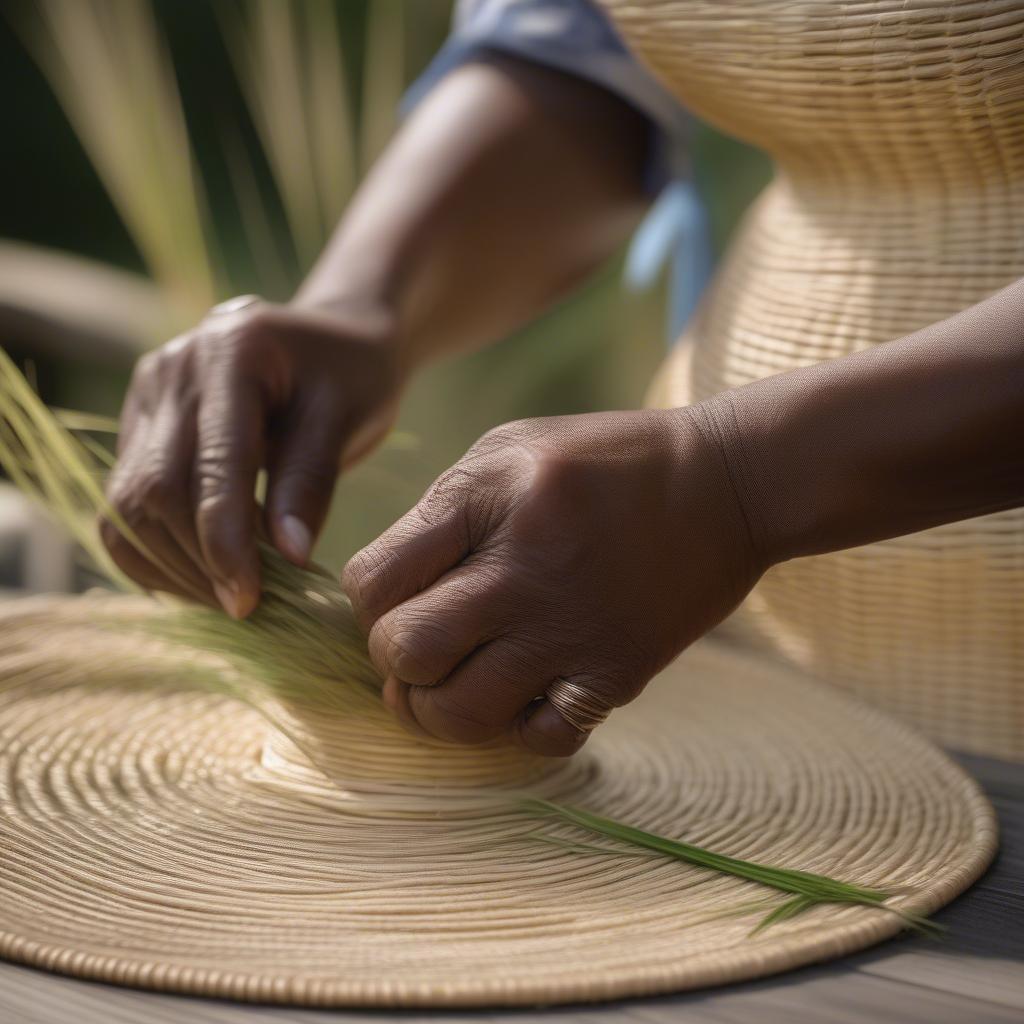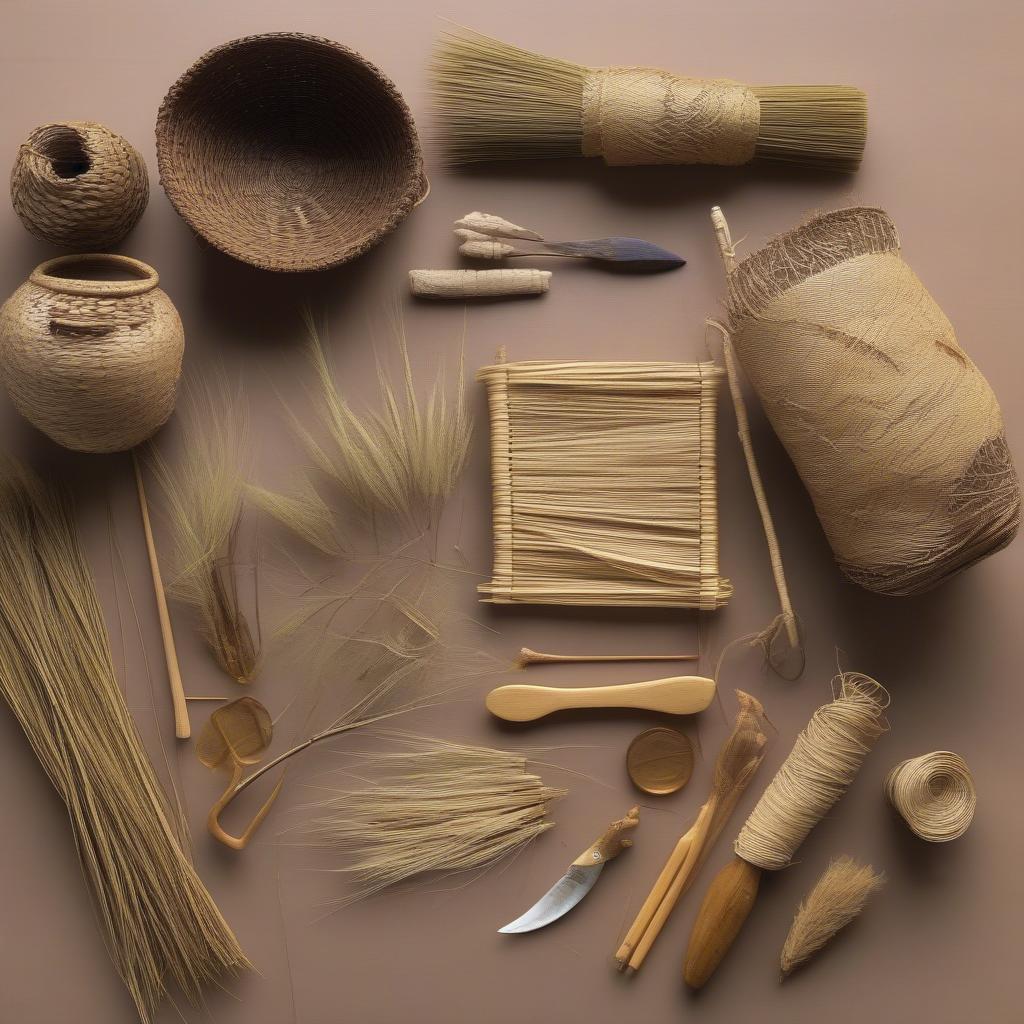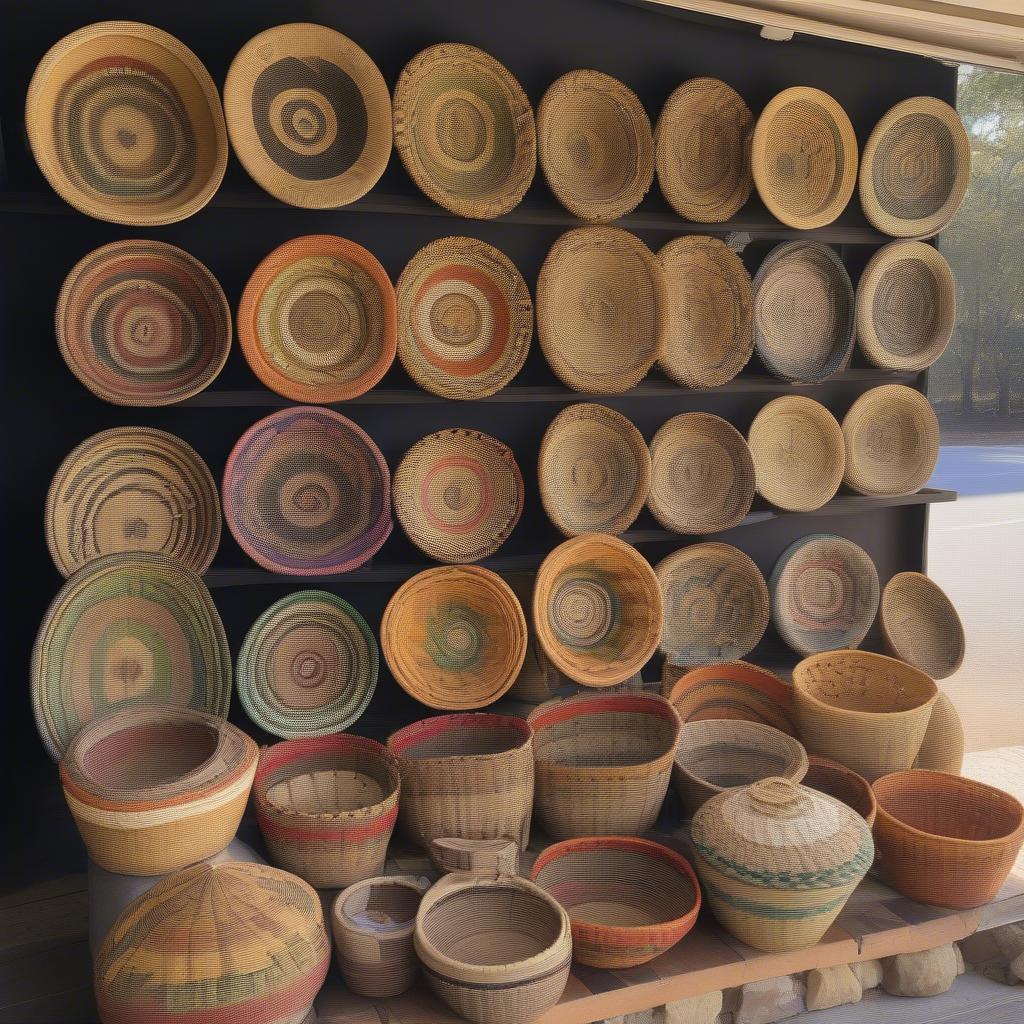Basket Weaving
Discovering the Art of Gullah Basket Weaving
Gullah Basket Weaving is a centuries-old tradition deeply rooted in the history and culture of the Gullah people of the Lowcountry region of South Carolina and Georgia. These intricately woven baskets, crafted from locally harvested sweetgrass, are not only functional objects but also represent a powerful connection to heritage, resilience, and artistic expression.  A Gullah woman weaving a sweetgrass basket, demonstrating the intricate coiling technique.
A Gullah woman weaving a sweetgrass basket, demonstrating the intricate coiling technique.
A Legacy Woven in Sweetgrass: History and Significance
Gullah basket weaving traces its origins back to West Africa, brought to the Americas by enslaved Africans. The knowledge and techniques were passed down through generations, evolving into a distinct art form unique to the Gullah community. These baskets, originally used for winnowing rice and other agricultural tasks, became vital for the Gullah people’s economic survival and cultural identity. The coiled designs and patterns often hold symbolic meaning, reflecting the natural world and spiritual beliefs.
Today, Gullah basket weaving continues to thrive, representing a vibrant cultural heritage. The baskets are highly sought after by collectors and art enthusiasts, appreciating their beauty, craftsmanship, and historical significance.
Do you want to learn more about the fascinating process? Explore our sweetgrass basket weaving workshop.
The Intricate Craft of Gullah Basket Weaving: Materials and Techniques
The primary material used in Gullah basket weaving is sweetgrass, a fragrant marsh grass known for its pliable nature and durability. Harvested sustainably, the sweetgrass is carefully dried and prepared before being meticulously coiled and stitched together using techniques passed down through generations.  Sweetgrass bundles, needles, and other tools used in Gullah basket weaving. Other natural materials, such as bulrush and pine needles, are sometimes incorporated to add texture and visual interest. The intricate coiling technique creates a strong and durable basket, capable of withstanding daily use. The tight stitches and intricate patterns showcase the weaver’s skill and artistic vision.
Sweetgrass bundles, needles, and other tools used in Gullah basket weaving. Other natural materials, such as bulrush and pine needles, are sometimes incorporated to add texture and visual interest. The intricate coiling technique creates a strong and durable basket, capable of withstanding daily use. The tight stitches and intricate patterns showcase the weaver’s skill and artistic vision.
You might also be interested in learning about sweetgrass basket weaving.
Preserving the Tradition: Gullah Basket Weaving Today
Gullah basket weaving continues to be an important part of the Gullah community’s cultural identity. Experienced weavers are dedicated to passing on their knowledge to younger generations, ensuring the tradition lives on. Numerous workshops and demonstrations are held throughout the Lowcountry region, providing opportunities for visitors and locals to learn about this unique art form. The popularity of Gullah baskets has also led to increased economic opportunities for Gullah artisans, helping to sustain their communities and preserve their cultural heritage.
Where to Experience Gullah Basket Weaving
Charleston, South Carolina, is a hub for Gullah culture, offering numerous opportunities to witness and purchase authentic Gullah baskets. Many artisans sell their work directly to the public, allowing for a personal connection with the artist and their craft. You can explore the rich history of basket weaving in Charleston by visiting our page on charleston south carolina basket weaving. Visiting local markets and galleries provides a chance to support Gullah artists and appreciate the artistry of these handmade treasures.
“Gullah basket weaving is more than just a craft; it’s a tangible link to our ancestors and a powerful expression of our cultural identity,” says renowned Gullah basket weaver, Sarah Mae Gadson.
Conclusion
Gullah basket weaving is a testament to the resilience and artistic brilliance of the Gullah people. These meticulously crafted baskets are more than just functional objects; they are tangible representations of history, heritage, and cultural pride. By supporting Gullah artisans and appreciating the intricate artistry of their work, we help ensure that this rich tradition continues to thrive for generations to come. Discover more about the art of Gullah basket weaving and connect with this vibrant cultural heritage.
 A variety of Gullah sweetgrass baskets displayed for sale, showcasing different sizes, shapes, and patterns.
A variety of Gullah sweetgrass baskets displayed for sale, showcasing different sizes, shapes, and patterns.
FAQ
- What is sweetgrass?
- How long does it take to weave a Gullah basket?
- Are Gullah baskets only made of sweetgrass?
- Where can I buy authentic Gullah baskets?
- How can I learn Gullah basket weaving?
- What is the significance of the patterns in Gullah baskets?
- How do I care for a sweetgrass basket?
Need assistance? Contact our Hotline: +84 388 951 999, or visit us in Hanoi, Vietnam, or Tech Avenue, Suite 12, San Francisco, CA 94105, USA. Our customer service team is available 24/7.
